





Many D2C brands and marketers have used Publicfast as a way to find influencers, run campaigns, and measure reach, but several commonly cited drawbacks are pushing people to look for alternatives. Users report issues such as slow content-approval workflows or limited transparency over influencer quality. These limitations often mean small or growing brands lack the flexibility or trust they need from a platform they depend on to drive real ROI.
With Publicfast's monthly plan starting at $99 or $690 annually, pricing can be a drawback given the limited feature set and lack of flexible options. Reviews on trusted sites also reflect concerns about UX clarity, leading many brands to search for alternatives.
Here are the top 10 alternatives we will explore in this article:
Let’s discover four reasons why some users might be seeking Publicfast alternatives:
Publicfast currently offers only two subscription options, $99 monthly or $690 annually, which leaves little room for customization. For small businesses or agencies managing multiple campaigns, this lack of tiered flexibility makes scaling difficult without overpaying for features they may not fully use.
Several users mention delays in content approval, especially when running time-sensitive campaigns. This can impact the pace of influencer collaboration and ultimately slow down campaign execution. (G2)
Marketers often express the need for better validation tools, like ratings from other brands or clearer fraud detection.
Publicfast’s influencer pool is seen as narrower compared to competitors, with fewer creators in categories like IT or specialized B2B niches. Users also note incomplete coverage across social platforms and occasional issues with PayPal payment processing.
Our comparison focuses on several key aspects:
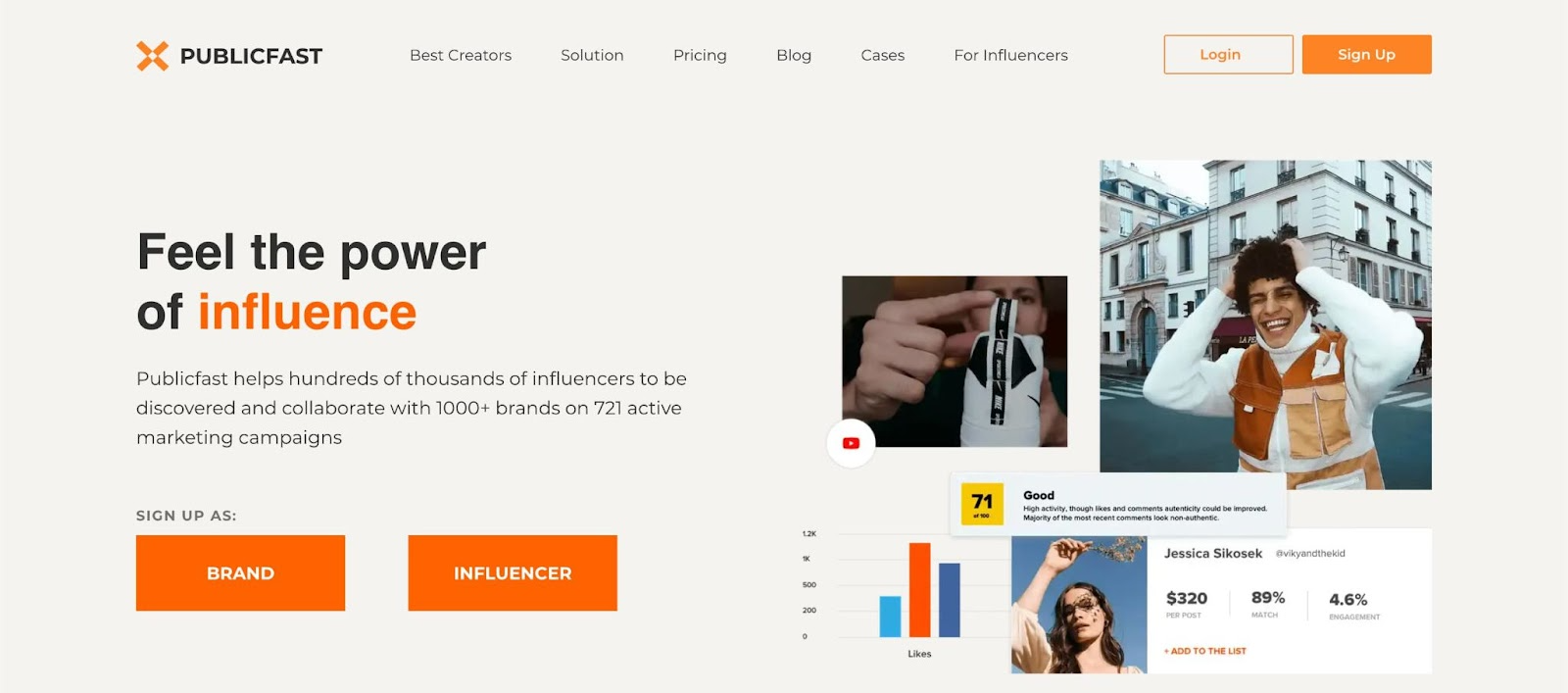
Platform Coverage: Instagram, TikTok, YouTube, Facebook, Twitch, X, LinkedIn, Telegram
Best For: Brands (especially SMEs, startups, e-commerce, agencies) that want to scale influencer marketing campaigns quickly, by having access to a large pool of creators with tools for discovery, outreach, content approval and analytics. It’s particularly useful where reach, multiple platforms, and lower overhead in influencer management are priorities.
Pricing:
Reviews: 4.9 / 5.0 (G2)
Ease of Use (UX/UI): Users frequently mention that the interface is intuitive and that getting started can be done in a few simple steps. Some users have said there are occasional confusions or a need for more clarity in rating/filtering of influencers.
Customer Support: Generally, users report that support is responsive via email / help desk, especially during initial setup or campaign onboarding. However, some reviews note delays or issues when dealing with more complex problems, influencer non-compliance, or features not working exactly as expected.

Platform Coverage: Instagram, TikTok, YouTube, Facebook, Pinterest, Snapchat, X, Twitch
Best For: D2C and eCommerce businesses aiming to expand their influencer marketing efforts with automation, advanced analytics, and smooth eCommerce integrations. It’s particularly valuable for brands running large-scale seeding or affiliate programs where ROI tracking is essential.
Pricing: (Plans are monthly and scalable.)
Reviews: 5.0 / 5.0 (Capterra)
Ease of Use (UX/UI): Praised for its simple, modern interface that minimizes the need for training. A drag-and-drop campaign builder, streamlined workflows, and customizable templates make campaign execution fast and efficient. The Chrome extension further accelerates workflows by pulling real-time influencer data directly into campaigns.
Customer Support: Influencer Hero’s support is frequently highlighted as a top benefit. Brands get round-the-clock live chat with real specialists, responsive email support, and access to an extensive Help Center with tutorials and videos. Each subscription comes with a dedicated account manager from day one, and Pro users can also join a private Slack channel for continuous, hands-on guidance.
Between Publicfast and Influencer Hero, pricing and scalability are the main differences.
Publicfast offers a simple $99/month ($690/year) plan, appealing to startups or small brands, but can feel limited for growing businesses needing advanced analytics and faster workflows. Influencer Hero starts at $649/month with tiered plans, providing richer features, larger influencer databases, and deeper automation for high-volume campaigns.
In features and usability, Publicfast gives access to 20M+ influencers, content approval workflows, and basic reporting, but users report slow approvals, occasional payment issues, and limited niche coverage.
Influencer Hero emphasizes automation and accuracy, with AI-powered discovery, fake follower detection, automated outreach, CRM boards, real-time ROI tracking, and Shopify/WooCommerce integrations, ideal for D2C and eCommerce brands focused on measurable results.
In short, Publicfast suits brands seeking a budget-friendly start, while Influencer Hero offers scalability, multi-platform support, and efficiency that justify its higher price.
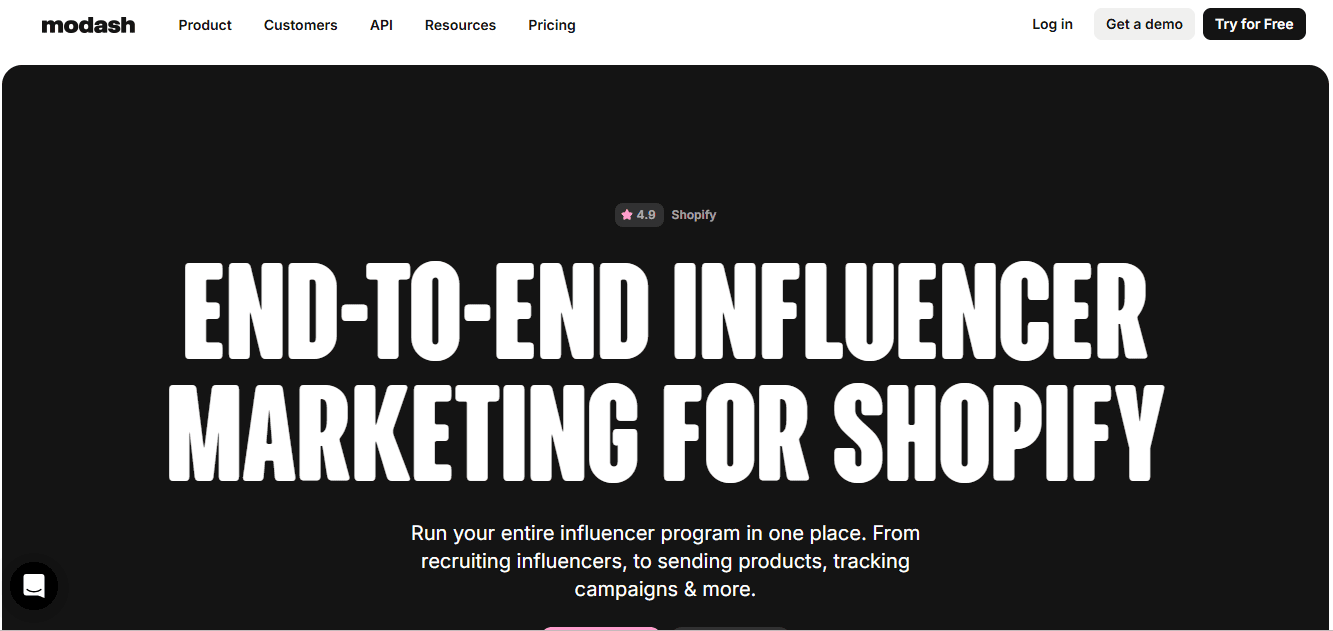
Platform Coverage: Instagram, TikTok, YouTube, and profile recognition for X, Snapchat, and other platforms.
Best For: Ideal for brands and in-house marketing teams seeking a full influencer marketing solution with strong discovery, analytics, and campaign management tools. It’s especially effective for companies already leveraging Shopify or other e-commerce platforms and aiming to expand influencer programs with data-driven insights.
Pricing: Modash offers free trials to both their Essentials and Performance plan.
Reviews: 4.9 / 5.0(Capterra.com)
Ease of Use (UX/UI): The platform is frequently praised for its clean, intuitive interface. Users highlight the discovery tools and filtering options as simple yet powerful, avoiding unnecessary complexity.
Customer Support: Modash’s support team is considered responsive and helpful. Users often mention that feedback is taken seriously, with updates rolled out quickly, and onboarding support is strong.
Publicfast is the more affordable option, starting at $99/month, with access to 20M+ influencers across multiple platforms like Instagram, TikTok, YouTube, LinkedIn, and Twitch. It’s ideal for startups and SMEs that want quick campaign setup, simple content approval, and multi-platform reach, though it can have some workflow or niche coverage limits.
Modash, starting at $199/month, is a more advanced solution with 350M+ creators, powerful discovery filters, affiliate automation, and Shopify integration for gifting and payouts. It focuses on Instagram, TikTok, and YouTube, making it best for eCommerce brands that need precision, automation, and deep analytics. In short: Publicfast is cost-effective and broad, while Modash is data-driven and built for scaling structured programs.

Platform Coverage: Instagram, TikTok, YouTube, X , Twitch, Pinterest, WordPress blogs.
Best For: Tailored to eCommerce and D2C brands, particularly Shopify and Amazon sellers, that need a complete influencer and affiliate management system, combining discovery, AI-assisted outreach, campaign tracking, and affiliate payouts.
Discover our top Upfluence alternatives to supercharge your influencer marketing strategy and find the perfect tools to grow your brand
Pricing: Upfluence offers annual contracts with the following pricing.
Reviews: 4.6 / 5.0 (G2)
Ease of Use (UX/UI): The platform is feature-packed, offering powerful discovery and management tools. However, new users often report a learning curve, requiring onboarding to take full advantage of its capabilities.
Customer Support: Many customers highlight attentive onboarding and helpful account managers, especially with integrations like Shopify, Outlook, and Gmail. That said, some report challenges with billing or contracts, making experiences dependent on account management quality.
Publicfast and Upfluence differ mainly in scope and pricing. Publicfast starts at $99/month and is aimed at startups and SMEs. It’s simple to launch campaigns and manage content approval, making it a solid choice for brands focused on reach and budget, though it may lack depth in niche markets and advanced features.
Upfluence, by contrast, is an enterprise-grade platform with advanced influencer discovery, affiliate management, CRM tools, and eCommerce integrations. Pricing is customized and significantly higher, reflecting its focus on large-scale campaigns and detailed analytics. It’s best for mid-sized to large brands that need in-depth data, robust integrations, and global campaign management.
In short: Publicfast is cost-effective and multi-platform, while Upfluence is a premium solution for bigger teams needing advanced capabilities and scalability.
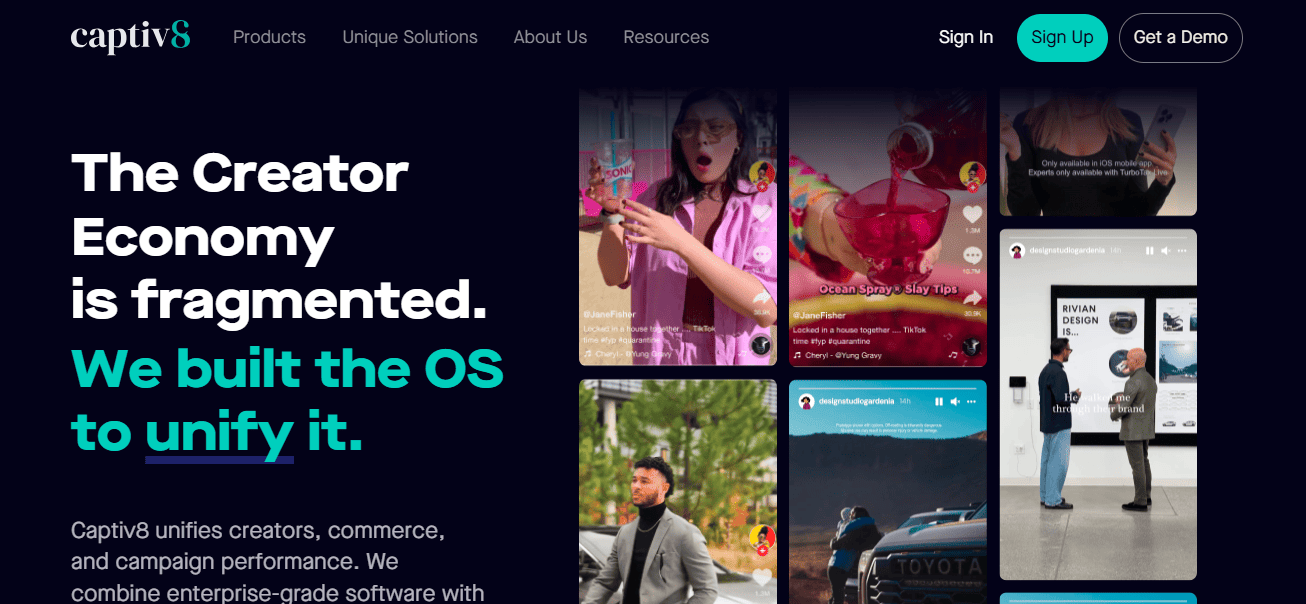
Platform Coverage: Captiv8 supports influencer campaigns across Instagram, YouTube, TikTok, Facebook, Twitter, and Pinterest.
Best For: Designed for large-scale brands and enterprises needing an advanced influencer marketing solution. With sophisticated discovery, performance tracking, and competitive intelligence, it suits organizations running multiple campaigns and investing in enterprise-level tools.
Pricing:
No monthly or customizable plans are available; pricing is rigid and enterprise-focused
Reviews: 4.6 / 5.0 (G2)
Ease of Use (UX/UI): While feature-rich, the platform can initially feel overwhelming. Once onboarded, users value customizable reporting and streamlined collaboration across teams.
Customer Support: Enterprise clients appreciate access to managed services, though some report slow response times, issues with payments, and difficulties resolving support tickets.
Publicfast is the affordable option at $99/month, giving startups and SMEs access to 20M+ influencers across Instagram, TikTok, YouTube, LinkedIn, Twitch, and more. It’s designed for brands that want quick campaign launches, though it may lack depth in advanced features and niche targeting.
Captiv8, meanwhile, is a high-end, enterprise-focused solution starting at $25K annually (plus a $3K onboarding fee, with optional affiliate/storefront features costing $20–30K/month). It offers deep discovery with 15M+ creators, advanced sentiment analysis, competitive tracking, team-wide collaboration, and highly customizable reporting. However, its steep pricing, rigid contracts, and reports of customer support and payment issues make it best suited for large organizations with big budgets and complex needs.
Publicfast is budget-friendly and broad, while Captiv8 is data-rich but only practical for enterprise-level brands.
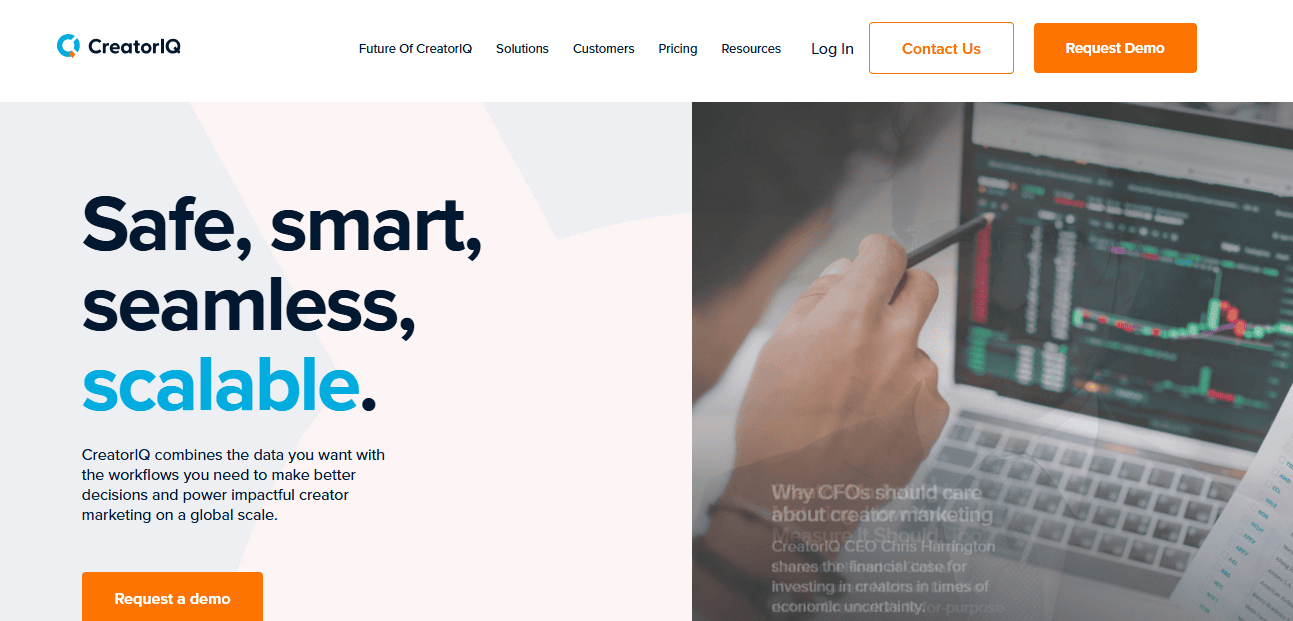
Platform Coverage: Instagram, TikTok, YouTube, Facebook, Pinterest, Twitch, X.
Best For: Ideal for global brands, agencies, and enterprises that need a highly scalable influencer marketing platform with advanced analytics, customizable workflows, and integrations across multiple tech stacks. It’s especially effective for organizations running large, complex, multi-market campaigns.
Reviews: 4.6 / 5.0 (G2)
Ease of Use (UX/UI): The platform is powerful and feature-rich, which comes with a learning curve. Once configured, the dashboard and reporting tools are considered user-friendly, flexible, and adaptable to various campaign requirements.
Customer Support: Users often praise the responsive account managers and detailed onboarding process, particularly for enterprise clients. However, due to the platform’s complexity, some report slower resolution times for technical issues.
Publicfast and CreatorIQ serve very different needs. Publicfast is simple and affordable at $99/month or $690/year, making it appealing for startups or smaller brands testing influencer marketing. It’s quick to launch campaigns but lacks the advanced analytics, reporting, and end-to-end workflows that bigger organizations may need.
CreatorIQ, by contrast, is built for enterprises, with pricing starting at $35,000/year and scaling up to $200,000/year.
It offers advanced discovery, full campaign management, integrated payments, real-time analytics, and dedicated support. While costly for small teams, it’s the stronger choice for large brands needing scalability and strategic depth.
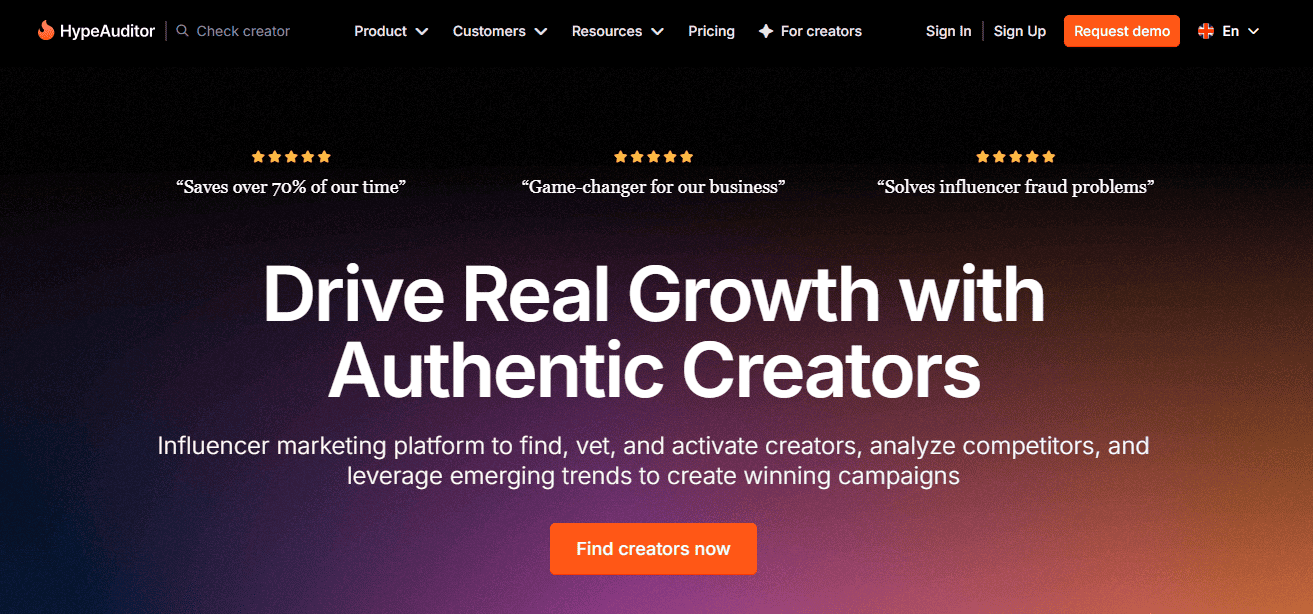
Platform Coverage: Instagram, TikTok, YouTube, Twitch, X (Twitter), Snapchat
Best For: Suited for brands, agencies, and eCommerce businesses that prioritize precise data, fraud detection, and ROI measurement. Particularly valuable for teams needing deep audience insights, authenticity scoring, and adaptable campaign management.
Pricing: Custom plans based on usage. Flexible contract terms depending on platform access, campaign volume, and number of reports.
Check out our top 10 HypeAuditor alternatives offering effective influencer marketing tools, side by side.
Reviews: 4.5 / 5.0 (G2)
Ease of Use (UX/UI): The platform offers a wealth of data and advanced features, which can be overwhelming at first. With onboarding, users find the dashboard intuitive, featuring clear filters and customizable reporting that make campaign monitoring more efficient.
Customer Support: Users frequently note helpful account managers and strong onboarding guidance, especially early on. However, some report slower responses for billing issues or complex feature troubleshooting.
Publicfast keeps influencer marketing simple and affordable, with a flat $99/month or $690/year plan. It’s a good fit for startups and small businesses testing campaigns without big budgets, but its limited features mean it may feel restrictive for teams that need deeper analytics, stronger discovery, or full campaign management.
HypeAuditor, in contrast, offers advanced discovery powered by AI, social listening, lookalike searches, and detailed audience authenticity metrics.
Its pricing starts around $10,000/year for the Business plan and scales up to $60,000 for Enterprise, making it better suited to mid-sized and larger brands. While more complex and pricier, it provides richer data, campaign tracking, contract management, and reporting that Publicfast cannot match.
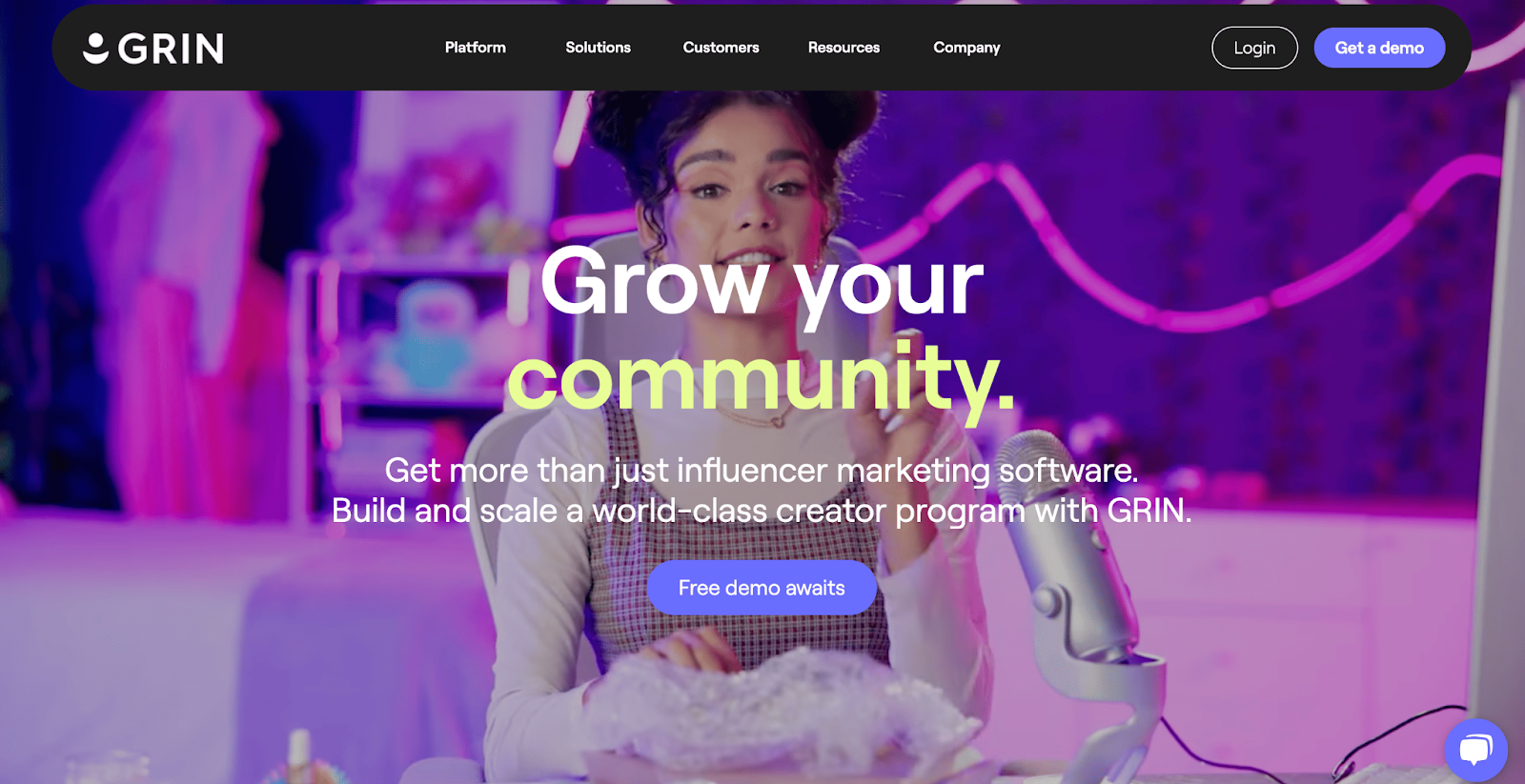
Platform Coverage: Instagram, TikTok, YouTube, X, Twitch, Snapchat
Best For: Designed for eCommerce and DTC brands that need an end-to-end solution for influencer programs, from seeding and gifting to affiliate tracking, payments, and UGC. It’s especially valuable for Shopify, WooCommerce, and Magento users who want influencer efforts directly tied to sales and ROI.
Pricing: Plans start at $25,000 per year, with monthly payments available and a required 12-month commitment; typical monthly costs range from $2,500 to over $10,000 depending on usage, though pricing transparency may vary based on selected features.
Reviews: 4.5 / 5.0 (G2)
Ease of Use (UX/UI): The platform is feature-rich and centralizes all workflows in one dashboard, including discovery, outreach, gifting, and reporting. While powerful, the depth of tools can feel overwhelming at first for new users.
Customer Support: Feedback on support is mixed. Many highlight strong onboarding and dedicated strategists, but others report slow ticket resolution, billing frustrations, and inconsistent help with platform issues.
GRIN Standout Features (H4)
Publicfast is the budget-friendly option at $99/month or $690/year, making it attractive for startups or small businesses running lightweight influencer campaigns. It’s straightforward and easy to launch with, but lacks advanced eCommerce integrations, in-depth analytics, and large-scale management features needed by growing or established brands.
GRIN, meanwhile, is built specifically for eCommerce and DTC companies, offering end-to-end campaign management with Shopify/WooCommerce integrations, unlimited creator partnerships, in-app payments, affiliate tracking, and a full UGC library.
Pricing starts at around $25,000/year, which may be steep for smaller teams, but its depth of features, ROI tracking, and scalability make it a much stronger fit for larger brands looking to manage influencer relationships and sales performance in one platform.
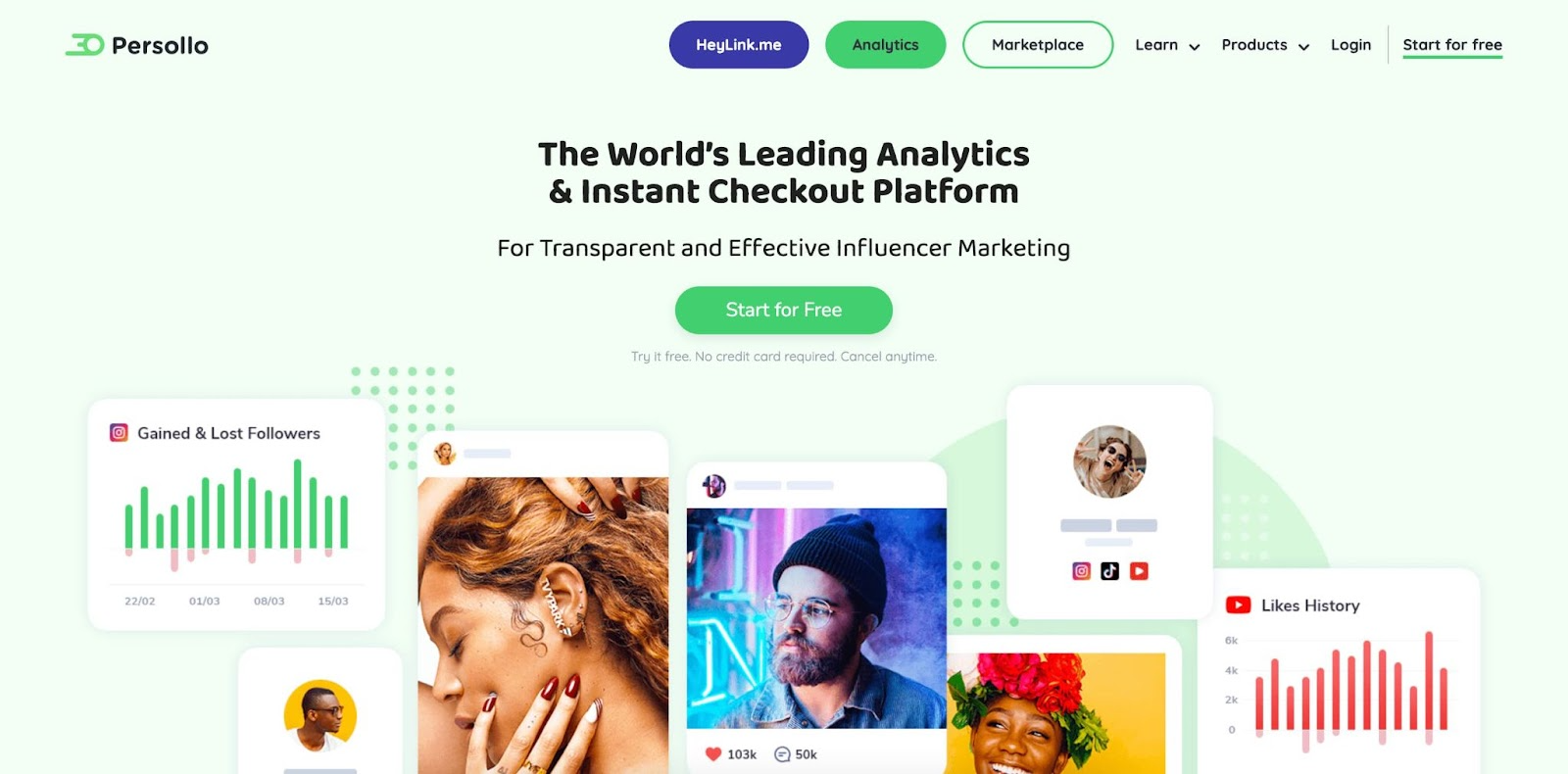
Platform Coverage: Instagram, TikTok, YouTube, Facebook, X.
Best For: A fit for eCommerce brands, creators, and boutique businesses that want to turn social interactions into immediate sales with one-click checkout. It’s particularly effective for fast-moving categories like beauty, lifestyle, and fashion, where impulse purchases drive conversions.
Pricing:
Reviews: 4.7 / 5.0 (G2)
Ease of Use (UX/UI): Known for being quick and easy to use, Persollo lets users set up instant checkout links without needing heavy eCommerce infrastructure. The streamlined interface is designed for accessibility and fast monetization, even for small teams without tech expertise.
Customer Support: Publicly available information is limited. Enterprise clients receive tailored service, but smaller users suggest onboarding and live support could be more accessible.
Uncover our list of the top 10 Persollo alternatives rated for pricing and performance in influencer campaigns.
Publicfast focuses on affordability and simplicity, with a flat $99/month or $690/year plan. It’s a fit for startups or small businesses that want to test influencer campaigns quickly, but it lacks advanced eCommerce tools, deep analytics, and conversion-focused features.
Persollo, by contrast, blends influencer marketing with instant social commerce. With a free starter plan and tiered pricing from $35/month up to enterprise options, it allows brands, especially in beauty, lifestyle, and fashion, to turn influencer posts into shoppable content with one-click checkout. While Publicfast is cheaper, Persollo’s direct sales integrations and AI targeting make it the stronger option for eCommerce-driven brands that prioritize conversions.
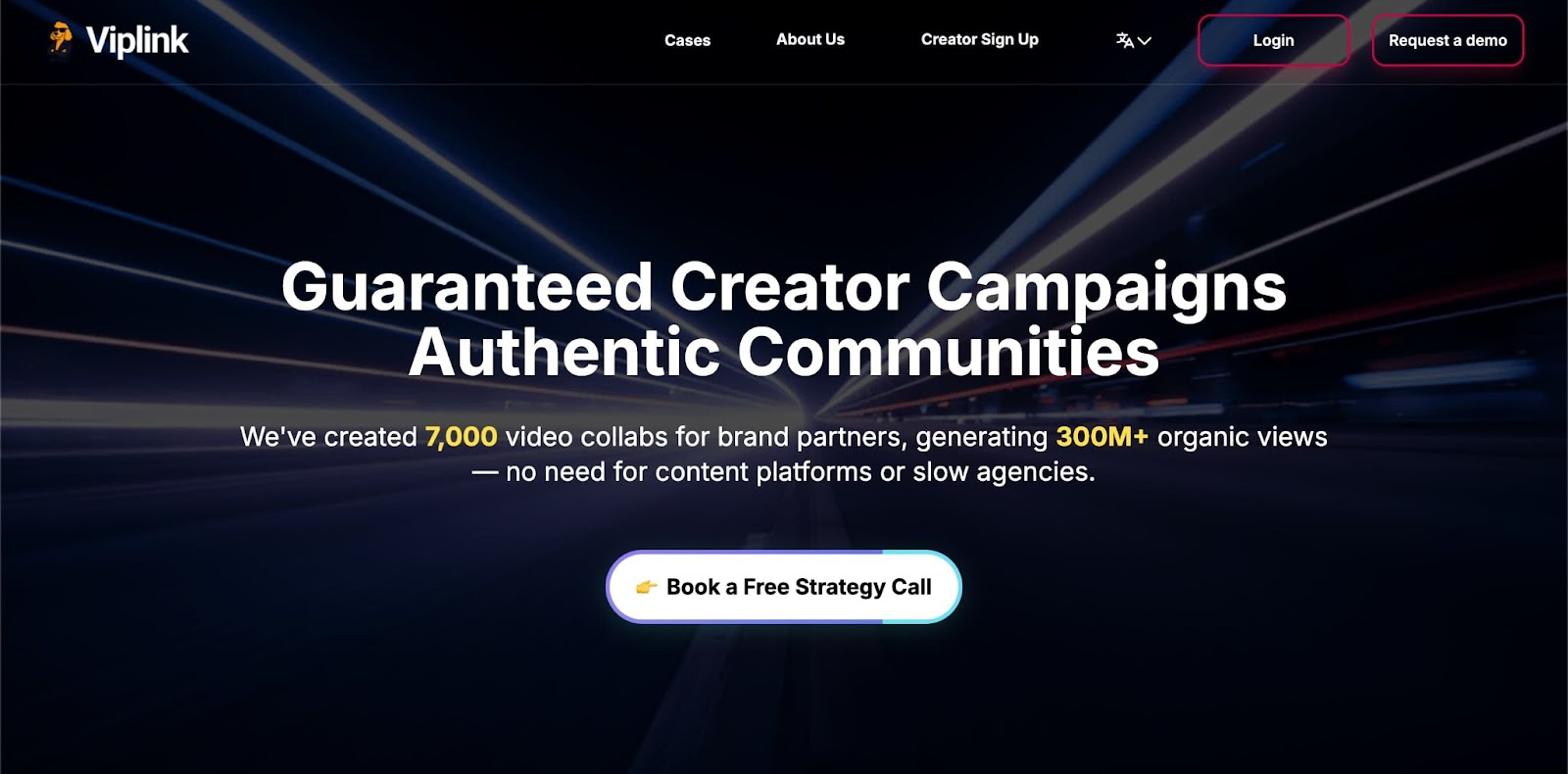
Platform Coverage: YouTube, Instagram, TikTok, Facebook.
Best For: Tailored for eCommerce and D2C brands that want to leverage AI for influencer discovery, campaign management, and content creation. It’s especially valuable for teams focused on automation and data-driven influencer selection at scale.
Pricing: No upfront fees; payment is only due once you approve creators and content. Brands must pay an additional fee, an amount not publicly disclosed, based on payments made to each creator.
Reviews: 4.4 / 5.0 (G2)
Ease of Use (UX/UI): The interface is modern, clean, and user-friendly, making campaign building and influencer searches straightforward. AI-driven workflows reduce manual effort in shortlisting creators, drafting outreach, and tracking results. However, users note that mastering the platform’s full feature set requires time.
Customer Support: Praised for its responsive team, Viplink AI offers assistance via chat, email, and consultations. Clients value detailed onboarding and documentation, though during high-demand campaign seasons, response times may be slower.
Publicfast offers a straightforward entry into influencer marketing at just $99/month, but it’s limited in automation, campaign management, and reporting depth. It’s most useful for small teams wanting to launch simple influencer collaborations.
Viplink AI, on the other hand, uses algorithm-driven discovery, smart campaign CRM, and automated analytics to streamline influencer marketing. Its pricing model is performance-based, with fees due only after approving creators and campaigns, though exact costs aren’t publicly disclosed.
Compared to Publicfast, Viplink AI provides stronger AI-driven tools and affiliate tracking, making it better suited for eCommerce and D2C brands looking to scale efficiently with automation and data-driven insights.

Platform Coverage: Instagram, TikTok, YouTube, Twitch, Facebook, X (Twitter), Pinterest, and blogs; 20M+ creator profiles across 10+ networks.
Best For: Mid-to-large brands and agencies needing a full-scale influencer marketing platform. Especially strong in verticals like gaming, fashion, consumer electronics, and entertainment, Sideqik suits enterprise teams that require robust discovery, campaign management, and ROI reporting with integrations.
Pricing: Undisclosed.
Reviews: 4.2 / 5.0 (G2)
Ease of Use (UX/UI): The platform is powerful but complex. Users say it requires onboarding to get comfortable with all features. Once familiar, the dashboard makes it easier to oversee large-scale campaigns with multiple creators.
Customer Support: Enterprise clients appreciate the dedicated account managers and responsive integration support. Smaller accounts, however, report longer wait times for technical resolutions.
Publicfast is the budget-friendly option with its flat $99/month or $690/year plan, making it appealing for startups or smaller brands looking to test influencer campaigns at low cost. Its simplicity allows quick setup, but it doesn’t offer the advanced features or scalability that larger companies may need.
Sideqik, by contrast, is an enterprise-grade platform built for brands like Logitech, Lululemon, and Universal Music. It supports full lifecycle management with access to 20M+ creators, advanced demographic insights, integrated payments, promotions, UGC galleries, and ROI tracking.
Pricing typically starts around $25K/year, so it’s not suited for small budgets, but for established brands seeking deep analytics, compliance, and large-scale campaign execution, Sideqik provides a far more robust solution than Publicfast.
Publicfast is an affordable starting point for small brands, but its limited features, like slower approvals and less transparency, push many to consider stronger platforms. Alternatives such as Modash, Upfluence, CreatorIQ, and Sideqik each offer unique advantages, from advanced analytics and AI-driven discovery to deeper eCommerce and enterprise support, giving brands more flexibility to match their goals and budgets.
Among these, Influencer Hero stands out as one of the best all-in-one options, combining discovery, AI-powered outreach, eCommerce integrations, and CRM in one platform. With scalable plans, strong support, and automation tools, it’s a top choice for D2C and eCommerce brands seeking measurable ROI and smoother campaign execution.
Book a demo with Influencer Hero and see how it can transform your influencer marketing campaigns today!

Publicfast is affordable but limited in approvals, pricing flexibility, and influencer validation. Alternatives like Influencer Hero, Modash, and Upfluence offer stronger analytics, automation, and scalability.
Influencer Hero is the top all-in-one option, combining discovery, AI outreach, CRM, eCommerce integrations, and reporting—ideal for D2C and eCommerce brands.
Persollo and Viplink AI are good budget-friendly choices with flexible or performance-based pricing. For scaling, Influencer Hero is a better long-term investment.
Enterprises often choose CreatorIQ, Captiv8, or Sideqik for advanced analytics, integrations, and global campaign management, though these come at higher costs.
Publicfast is simple and cheap ($99/month) but limited. Influencer Hero (from $649/month) offers deeper automation, eCommerce support, and ROI tracking, making it better for growing brands.



Schedule a Demo with one of our media experts below.